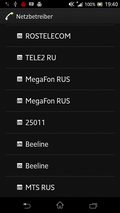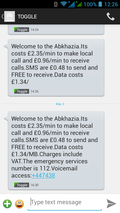One tiny downside of running cloud based services at home such Owncloud files, calender + address book synchronization, VPN services, Instant messaging server, etc. at home is that one becomes dependent on the power company and Internet provider to keep you connected to your services when you are not at home. And every now and then things go wrong. Back in December I had a two hour power outage that I managed to detect with my GSM enabled power socket that sent me an SMS once power was restored so that angle is covered. To survive DSL outages I have a fallback solution over wireless in place. And that's just what I needed recently when my DSL line failed for two days.
While it worked rather well it also demonstrated just how many self hosted services I used today and for which the fallback solution ensured service continuity and for which it didn't. So here's the story:
In addition to the DSL router for normal operation I have a cellular router in place for backup Internet connectivity over a different default gateway IP address. The router also registers a backup dynamic DNS address so I can still access the network remotely when the DSL line fails. One more thing I need to switch my services to the backup line is a way to remotely switch the default gateway addresses of my servers away from the DSL router during an outage and towards the cellular router For this purpose I use a secure shell (ssh) login on a box in the network that I can reach over the cellular connection. For this purpose I have a separate Raspberry Pi to which I have enabled port forwarding from the cellular router over a non-standard TCP port so I can securely reach it via SSL using the backup dynamic IP address. Once I'm logged into this machine I can ssh into my other routers to change the default gateway and DNS server and then restart the network stack on them.
The last thing that remains to be done during a DSL outage is to switch the dynamic DNS domain I used for my services away from the DSL router and towards the cellular router. Once that is done I have my main services back in operation. In addition, I can use the Raspberry Pi's vncserver to remotely get a GUI on a machine inside my home network and use a browser to access the web interface of the routers for maintenance. Again, the SSL connection helps to securely access the VNC server and I'll describe in a second post how that works.
So while this works very well there are a number of quirks:
The first is that most cellular network operators do not assign public IP addresses (anymore) which is, however, a requirement for this to work. Fortunately my cellular operator has a dedicated APN but it seems to be a rarity these days.
The second thing that makes the use of the backup solution somewhat of a pain in practice is that the cellular router doesn't recognize that when I'm at home and use my domain name to access my cloud services it should loop back the packets internally instead of sending them out to the network where they are lost. That means that while I'm in the home network I can't reach my services over the default domain name. My solution for this is use a VPN to connect to an external VPN service so the loopback is performed externally. Not ideal but the amount of data that goes back and forth is not very large.
Another thing is that my VPN service doesn't work while I'm using the backup solution because the cellular router doesn't have an option to create static routing entries to the IP address range and subnet used by my VPN server for the clients. While I could live without the VPN server for a while as I can also use an external VPN service it limits my ability for remote support when I am not at home as I use my home VPN service as part of that solution when I'm behind a NAT myself and thus not reachable for reverse VNC connections.
So while by and large the backup solution works there are some shortcomings that would take some more tinkering to overcome. But o.k. it's a backup solution so I can live with that for a while. And yes, agreed, this is not something non-techies would set up at their home so it's by no means a solution for the masses.


